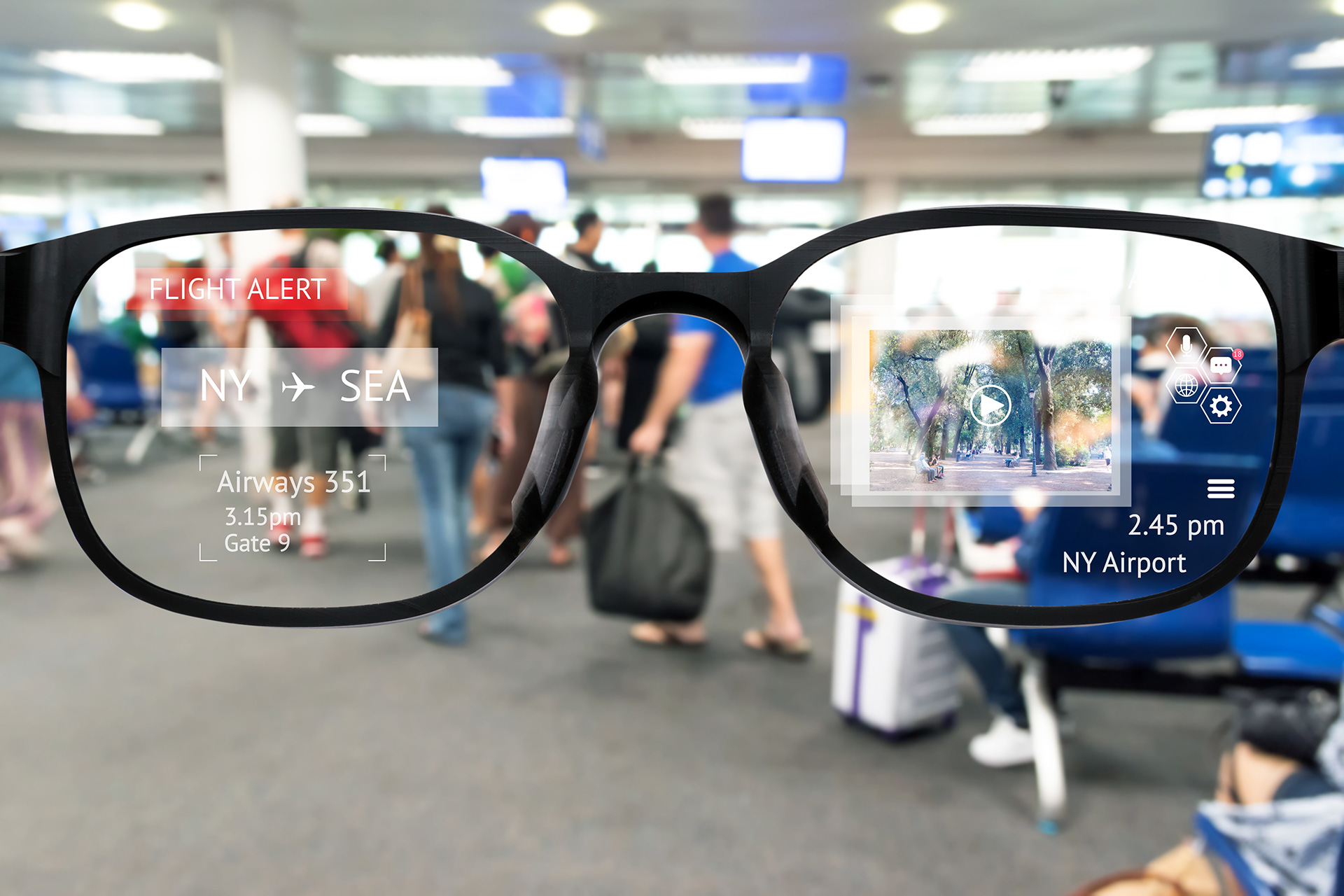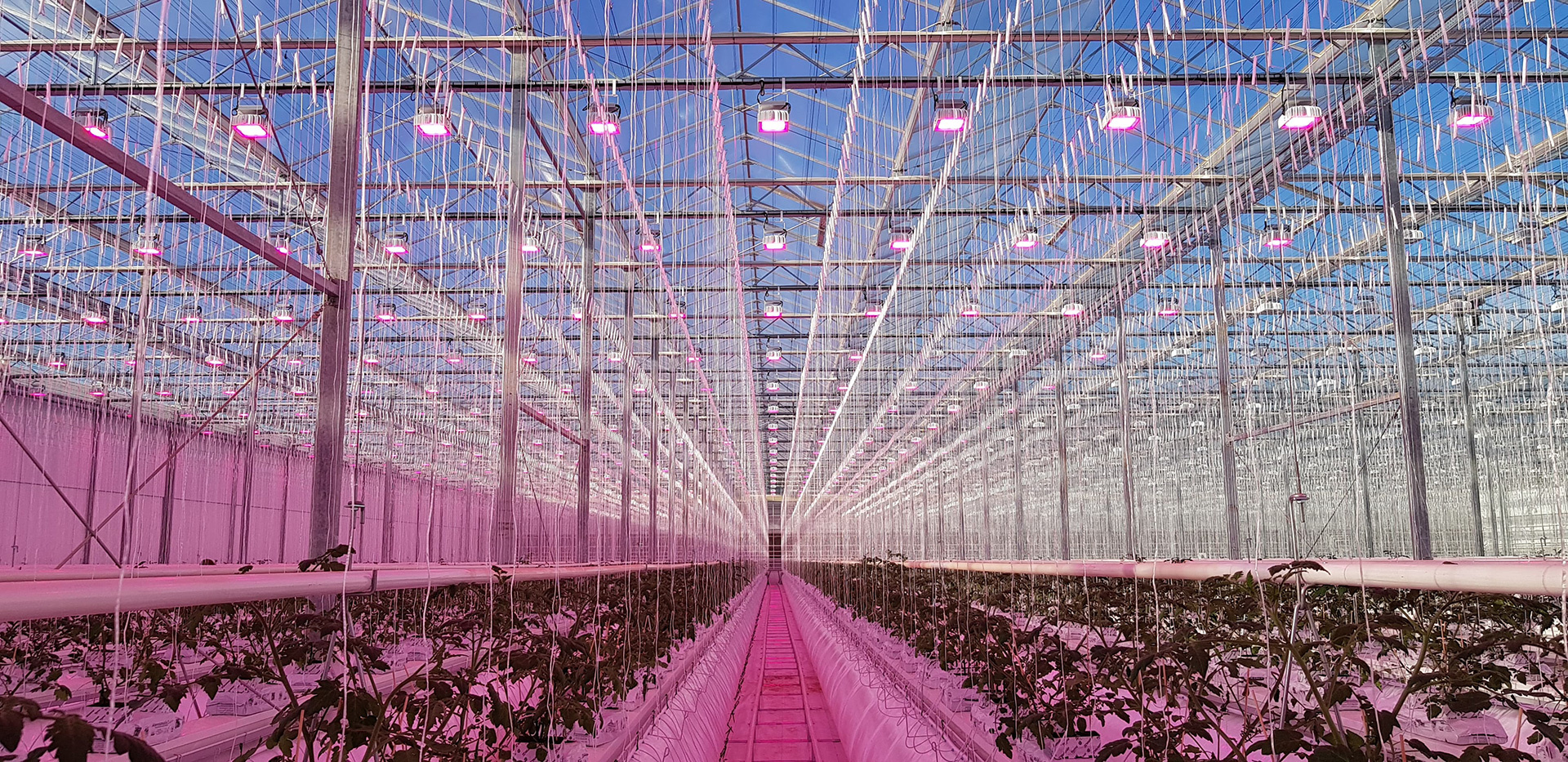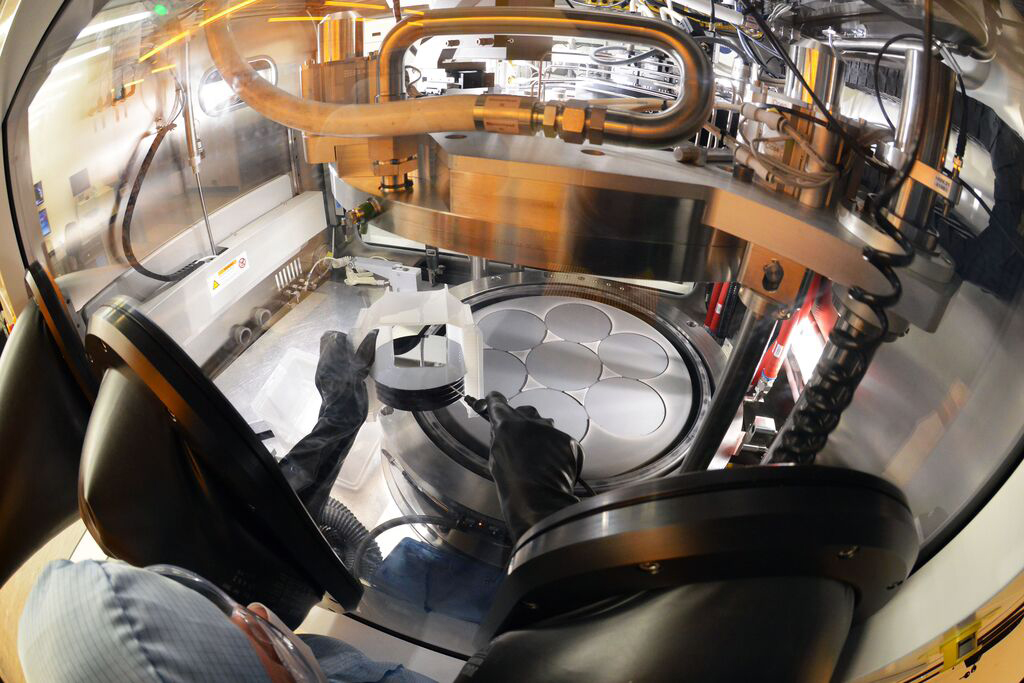Since 2018 Plessey has scaled back its manufacturing ambitions as it focuses on development and support for customers. It has parted company with Michael LeGoff, its founder and previous driving force, but the new co-chief executive Keith Strickland insists Plessey is in a good position to exploit what he thinks is its technology lead in the products it has chosen to concentrate on – microLEDs.
 The new electronic chips promise to make possible "augmented reality" spectacles which display useful information as well as views of the outside word. The picture shows what someone might see when at an airport.
The new electronic chips promise to make possible "augmented reality" spectacles which display useful information as well as views of the outside word. The picture shows what someone might see when at an airport.
MicroLEDs could be vital pieces of the technological jigsaw needed to create a major industry out of augmented reality – a way of superimposing digital images onto views of the real world. Augmented reality displays have potential in fields from entertainment to industrial product development.
“Since the technology is new, the market for microLEDs barely exists – but all the signs are that it will be extremely big,” Strickland says.
“It is an exciting area to be in. If the TV industry for instance were to decide to move over to microLEDs in the next few years, the electronics industry in its current form would find it impossible to meet the demand.”
 As part of Plessey’s business it makes light sources to help accelerate plant and crop growth in indoor farms
As part of Plessey’s business it makes light sources to help accelerate plant and crop growth in indoor farms
Potential users of microLEDs in new displays include big names such as LG and Samsung in South Korea and the US’s Apple, Google, Facebook and Magic Leap. The latter is a maker of head-mounted goggles for combining computer generated and real images.
As a result of its growth plans, Plessey is building up staff. Strickland says the current 140 employees – down from 165 in 2015 – could double by 2021. “We are recruiting quite heavily at present,” he says.
Plessey – based in Plymouth, south-west England – holds out attractions for technically qualified young people, says its co-head. “A lot of younger people like the idea of working in a business that has a strong connection to the industries of firms such as Google and Facebook. Plus, there is the appeal of being involved with some exciting start-up firms exploring new ideas.”
 The company has invested heavily in equipment for making minuscule semiconductor-based light sources
The company has invested heavily in equipment for making minuscule semiconductor-based light sources
Strickland’s comments underline the opportunities in UK manufacturing that Made Here Now has been established to highlight.
Augmented reality could combine with other electronic technologies to make possible new forms of computer games or television systems. It could also help design engineers visualise new products.
Plessey’s key advantage, says Strickland, is that it can make microLEDs that are particularly bright and consume small amounts of power – vital factors given the requirements for new displays to provide sharp pictures on tiny screens and run for a long time on low power sources.
The company bases its technology on developing LED structures from gallium nitride on a substrate of silicon, instead of the usual sapphire. Use of a silicon-based technology potentially opens the way to making microLEDs in high volumes and at a low cost.
Find out more about Plessey here in Made Here Now's updated case study.
